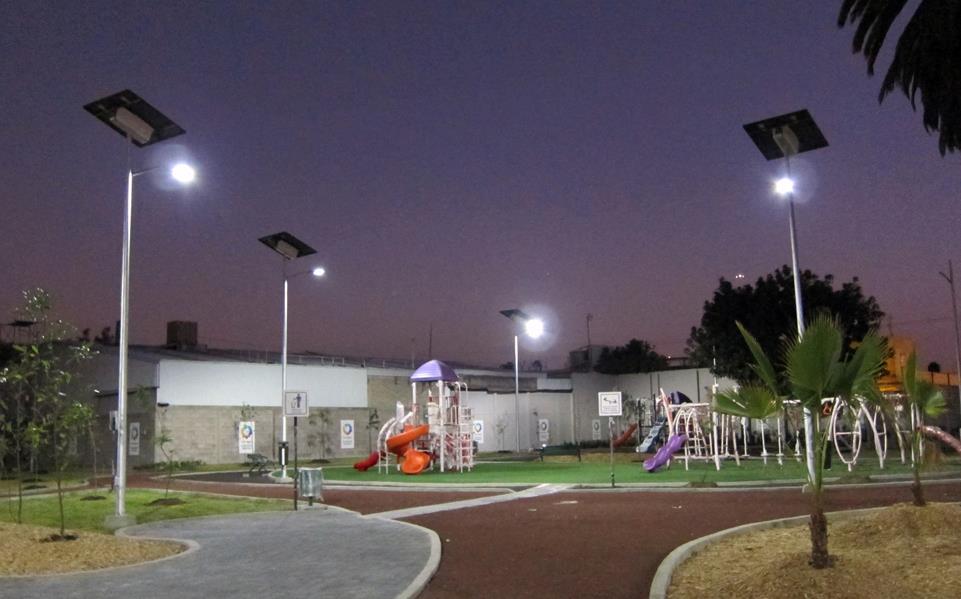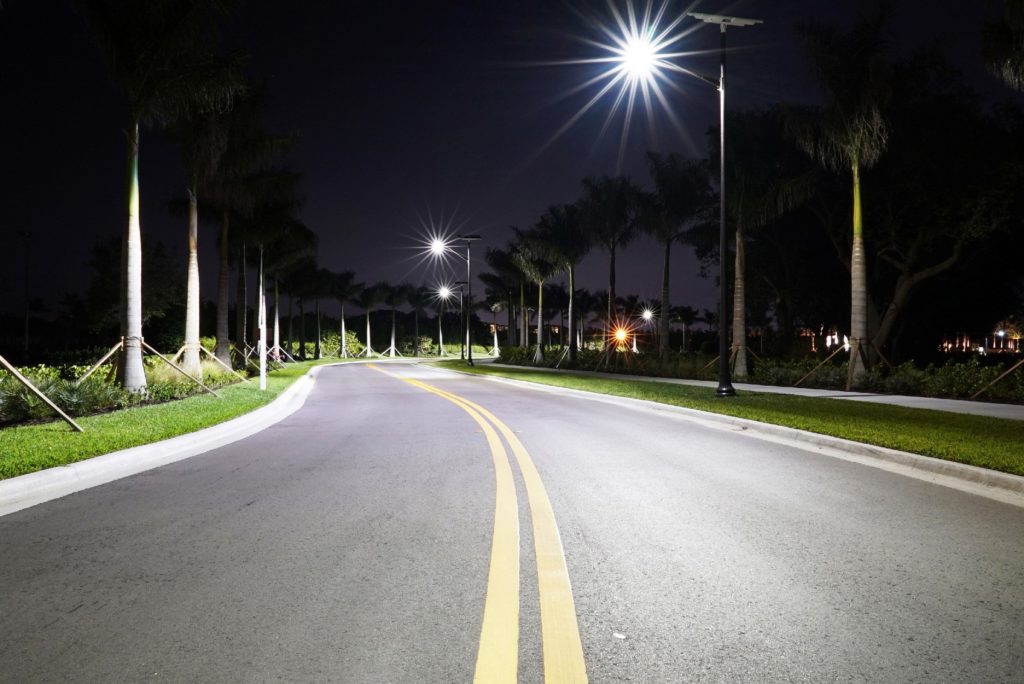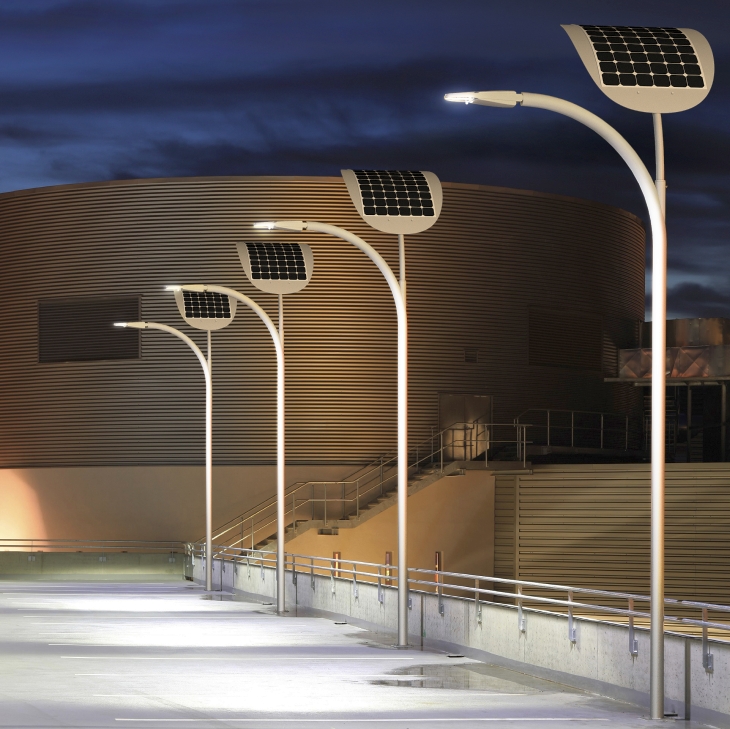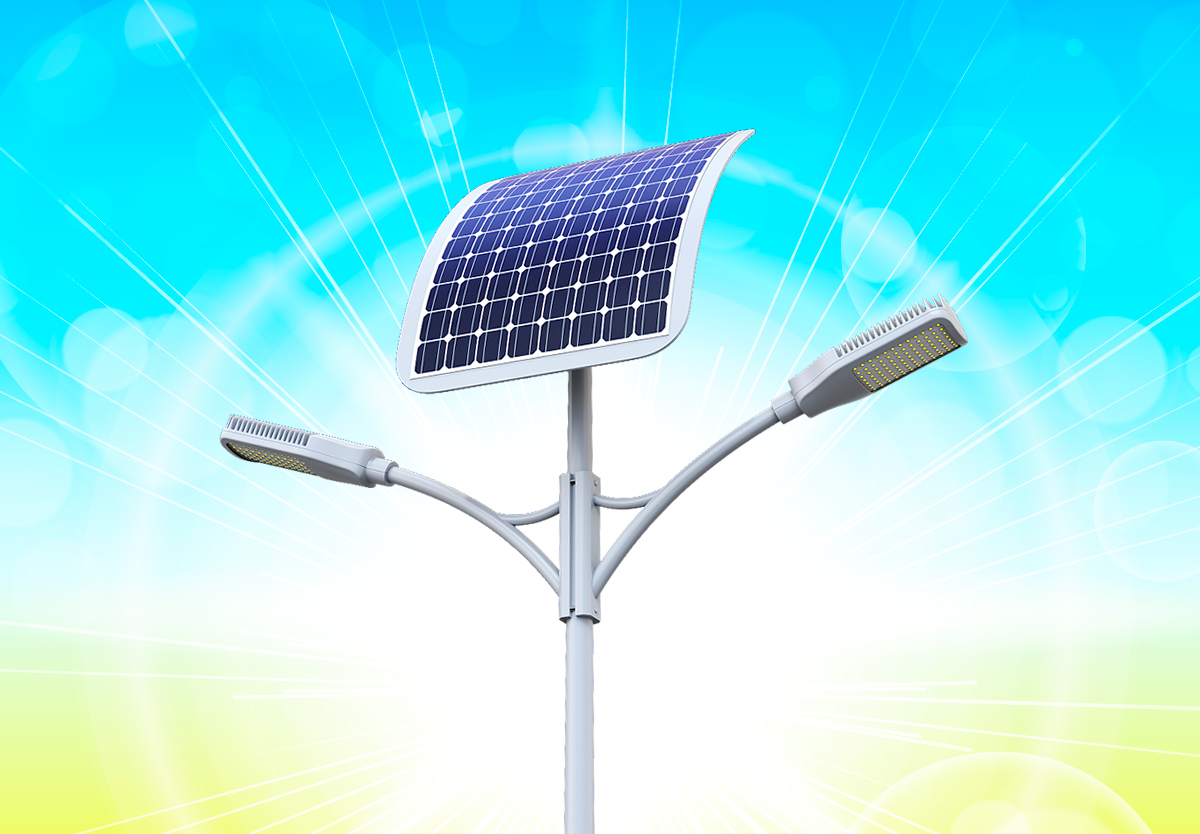In recent years, the rise of solar streetlights in urban landscapes has been nothing short of remarkable. With their cost-effective and ecologically friendly nature, these innovative pieces of technology have provided a much-needed alternative to traditional forms of lighting.
Not only do they offer a clean energy source with no emissions or pollutants, but they also provide an attractive and efficient way to light up streets at night. This article will explore the benefits that solar streetlights can bring to our cities as well as some of the challenges associated with their installation. In doing so, we hope to illuminate the future possibilities when it comes to using renewable energy sources in our cities.
Benefits of Solar Street Lighting for Urban Areas

The use of solar street lights in urban areas has become increasingly popular, as cities strive to reduce their carbon footprints and implement more sustainable lighting solutions. Solar streetlights bring several benefits to urban areas.
For starters, they are cost-effective; the initial installation cost is low, and thereafter requires no additional energy or maintenance costs. In addition, solar street lighting can provide better illumination than traditional alternatives due to the higher lumen output available with LED technology. This improved visibility can increase public safety by illuminating dark streets and alleyways at night.
Furthermore, solar streetlights have environmental benefits too – they help reduce light pollution from artificial lighting sources that may disrupt natural ecosystems; plus they require no fuel consumption making them an eco-friendly option for cities looking to go green. Finally, modern solar street lights also come with motion sensors that switch on when someone approaches – saving electricity and providing convenience for pedestrians walking around after dark.
All these factors make solar-powered street lighting a great choice for any city wishing to invest in smart infrastructure solutions that will benefit both its citizens and the environment alike!
The Challenges and Opportunities of Implementing Solar Street Lights

The implementation of solar streetlights is a major opportunity for urban landscapes. This new technology promises to provide cities with safer, more efficient lighting that both improves visibility and reduces energy consumption.
While this may seem like an ideal solution, there are still some challenges associated with the transition from traditional street lighting to solar street lights. One of the biggest challenges lies in finding suitable locations for installation: many streets may not be exposed to enough sunlight during certain times of the year or have structures blocking out direct sunlight at all times.
Additionally, existing infrastructure must be considered when installing new solar-powered units; many older buildings do not have adequate wiring or support systems in place for these types of installations. Aside from logistical problems, one must also factor in cost considerations: while they offer considerable savings on electricity bills compared to traditional systems over time, the upfront costs can often be prohibitively expensive for smaller cities and towns with limited budgets.
As such, it’s important that organizations thoroughly weigh their options before making any investment decisions regarding solar streetlights. Finally, local regulations should also be taken into account when introducing these devices into urban settings; different states and municipalities have varying standards concerning acceptable levels of light pollution as well as other restrictions related to public safety and aesthetics.
Despite these potential roadblocks though, it appears that more people are recognizing the advantages offered by implementing this type of clean energy solution throughout their communities — illuminating our future one step at a time!
Exploring the Impact of Solar Street Lights on Local Communities

Although the traditional street lighting system has been used for more than a century, recent technological advancements have allowed cities and towns to explore the use of solar-powered street lights. As local authorities are becoming increasingly aware of the environmental benefits provided by solar technology, many communities are beginning to embrace this renewable energy source in their urban centers.
The impact that solar streetlights can have on local communities is significant. By reducing electricity consumption, these lights help conserve natural resources while providing illumination at night.
Additionally, they reduce carbon emissions from burning fossil fuels and help make cities more sustainable and eco-friendly. Further, with less reliance on nonrenewable sources of power, citizens may experience lower utility bills and improved air quality.
Moreover, the introduction of solar street lighting systems brings unparalleled convenience to pedestrians by extending visibility into areas that would otherwise be dark. This allows people greater freedom when traveling after sunset or during other times when light is needed for safety reasons.
Solar lamps also provide an attractive aesthetic improvement to neighborhoods as well as increased security through better visibility for law enforcement personnel patrolling streets at night time hours. What’s more, is that some installations even feature features such as motion sensors that can detect movement near them and turn themselves on automatically – providing instantaneous lighting where it’s most needed without wasting energy needlessly when no one is present in the area being illuminated.
With all these advantages combined, it’s not difficult to see why so many towns across America are making strides toward transitioning to a greener future powered by solar streetlights today.
Case Studies: Examining the Adoption and Success of Solar-Powered Streetscapes

Case studies are an important tool for understanding the adoption and success of solar-powered streetscapes in urban landscapes. Examining real-world projects can provide valuable insights into the challenges and opportunities associated with this new technology.
In particular, case studies give us an idea of how installation costs compare to long-term energy savings, as well as whether or not local communities accept these changes to their cityscapes. One example is a project undertaken by San Francisco State University that looked at replacing traditional streetlights with solar ones in three different neighborhoods.
The results showed significant reductions in both electricity bills and maintenance costs over time while providing sufficient illumination for pedestrians and drivers alike. Additionally, the project revealed widespread public acceptance from all stakeholders, including those living nearby who were initially unsure about such a drastic change to their neighborhood’s aesthetic appeal.
In another study conducted by Rutgers University, researchers focused on two distinct types of streetscapes: one with traditional lighting systems powered by either natural gas or electricity; and one featuring modern LED lights powered entirely through solar panels on rooftops or walls near each lamp post. After examining energy consumption rates across several months, they concluded that households using solar streetlights saved up to 20% more money than those relying solely on nonrenewable sources like natural gas or coal power plants— proving that investing in renewable energy solutions offers tangible cost savings for cities looking to upgrade their infrastructure without breaking the bank.
These examples demonstrate just how successful solar-powered streetscapes can be when implemented properly— saving municipalities money while also improving the quality of life for citizens who live nearby due to increased safety and reduced light pollution levels at night hours. By studying existing projects we can gain invaluable knowledge about what works best within our cities— helping us move closer to achieving a greener future where everyone benefits from cleaner air, lower emissions, climate stability, economic growth –and most importantly– brighter days ahead!
Conclusion

The rise of Solar Street Lights in urban landscapes is genuinely remarkable and they are transforming the way we view public lighting. With their energy-efficient design, solar street lights provide an environmentally friendly form of illumination that can be used to light up entire streets or parks with minimal impact on the environment.
Their cost efficiency also makes them a great choice for cities looking to reduce long-term costs while still providing bright and reliable lighting. The future looks brighter than ever with Solar Street Lights illuminating our lives into the future.

